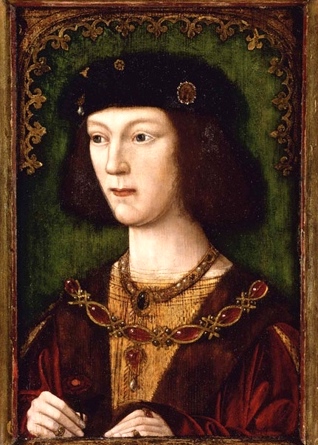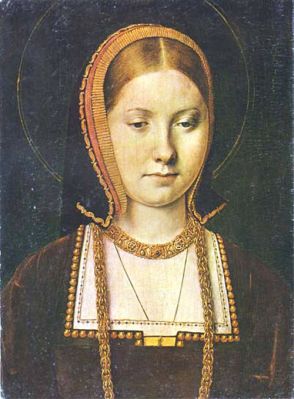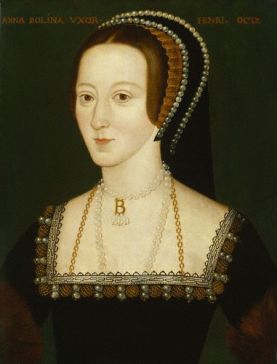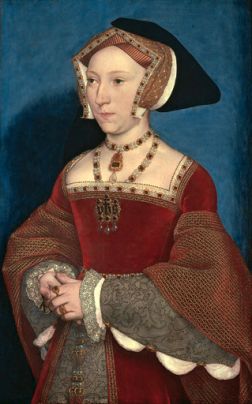|
Fact: Quite the opposite in fact. Granted, Henry was known for his infamous red hair which was a common trait shared by the Tudor house as a whole, he was not always the bloated man in his notorious Hans Holbein portrait. In fact, Henry was thought to be the most handsome prince in all of Christendom early into his reign with a fiercely athletic build. Don't believe it? Take in consideration this first hand account of Henry's appearance written in 1515 by a Venetian ambassador: "His Majesty is the handsomest potentate I ever set eyes on; above the usual height, with an extremely fine calf to his leg, his complexion very fair and bright, auburn hair combed straight and short, in the French fashion, and a round face so very beautiful that it would become a pretty woman, his throat being rather long and thick..." It wasn't until a well known jousting accident in 1537 (the same one that is said to have caused Anne Boleyn to miscarry a son) that Henry's health declined. He was said to have been knocked from his horse or some variation of having the horse fall upon him, nearly crushing him. He was unconscious for approximately 2 hours and his health was said to be grave. Ultimately he came to but not without a large gash in his leg due to the binding of his armor cutting into his skin, re-opening an old jousting wound and eventually leading to the ulcer that would immobilize the once athletic king and lead to his weight gain. Is it not unfortunate that a man of such athleticism for most of his life is now known solely for the tribulations that became of him in later life?
| | | |
Myth: Katherine of Aragon was dark haired
with dark eyes, a dark complexion and was unattractive |
Fact: Katherine was none of these things! This is a complete misnomer made by many movies of the period who feel it will be easier for audiences to relate to a Spanish woman by making her look what they believe is "hispanic." Instead, Katherine was known for her auburn hair, light eyes and light skin for keep in mind that this woman was from Spain thus Europe but also had English blood in her lineage! She was the great-great granddaughter of John of Gaunt (the same man who conceived the Beaufort line thus Margaret Beaufort who was the mother of King Henry VII. Plain and simple, she was a European woman with European traits and known as a great beauty in her youth. | | | |
Fact: Anne's beauty (or as some claim, lack thereof) has always been a debatable topics with many sides to take. For one, Anne may not have been seen as a great beauty for she strayed so far away from the norms of traditional English appearance. During this time, beauty in England belonged to those who were fair. Fair hair, fair skin and fair eyes while Anne Boleyn seemed to be the polar opposite. With an olive complexion, dark hair and dark eyes, Anne seemed to go against traditional beauty values. Did that necessarily make her ugly? Of-course not. Just different and it may have taken some adjustment to get used to. Still, there are those who argue that Anne was “Not one of the handsomest women in the world; she is of middling stature, swarthy complexion, long neck, wide mouth, a bosom not much raised and eyes which are black and beautiful” (Francesco Sanuto, Venetian Diplomat) and perhaps she was not the most beautiful in the world but it is important to remember that Anne Boleyn had many enemies and remains one of history's most polarized victims. Yet it still beckons the question, if she was so unattractive then would the King of England take her as a mistress and ultimately his wife? Methinks not. Fact: If Anne had a sixth finger, Henry would not have taken an interest in her nor married her. Such deformities during this time were seen as marks of the devil. This story is a prime example of polarization of Anne's character during Queen Mary's reign and begun with this passage below written by Nicholas Sanders: “Anne Boleyn was rather tall of stature, with black hair and an oval face of sallow complexion, as if troubled with jaundice. She had a projecting tooth under the upper lip, and on her right hand, six fingers. There was a large wen under her chin, and therefore to hide its ugliness, she wore a high dress covering her throat. In this she was followed by the ladies of the court, who also wore high dresses, having before been in the habit of leaving their necks and the upper portion of their persons uncovered. She was handsome to look at, with a pretty mouth.” Ultimately, Sanders' account has been discredited by modern day historians stating that Sanders' was not even a contemporary of Anne and not to mention that such a style of dressing was not fashionable in Anne's time. Fact: Anne Boleyn was beheaded on 20 acts of adultery with 5 different men including her brother who she was also found guilty of committing incest with. One of the men was Henry Norris who Anne was accused of sleeping with, the charge went as follows: “On 6th October at the palace of Westminster… and on various other days before and after, by sweet words, kissings, touchings, and other illicit means… she did procure and incite… Henry Norris… a gentleman of the Privy Chamber of our lord the King, to violate and carnally know her, by reason whereof the same Henry Norris on 12th October… violated, stained and carnally knew her…” She was also present for this incredibly disturbing statement to be said against her involving her own brother: “tempted her brother with her tongue in the said George’s mouth and the said George’s tongue in hers.” Ultimately, claims of witchcraft were ultimately used to explain how Anne beguiled the King and also used against her even when she has alibis for 12 of the 20 claims made against her. It was a mock trial but ultimately she was not executed for witchcraft. After being sentenced to either being burned or having her "head smitten off, as the King's pleasure should be further known the same" Anne delivered this short speech baring all the composure of a Queen: "I do not say that I have always borne towards the King the humility which I owed him, considering his kindness and the great honour he showed me and the great respect he always paid me; I admit too, that often I have taken it into my head to be jealous of him… But may God be my witness if I have done him any other wrong.”
Fact: | |
|



